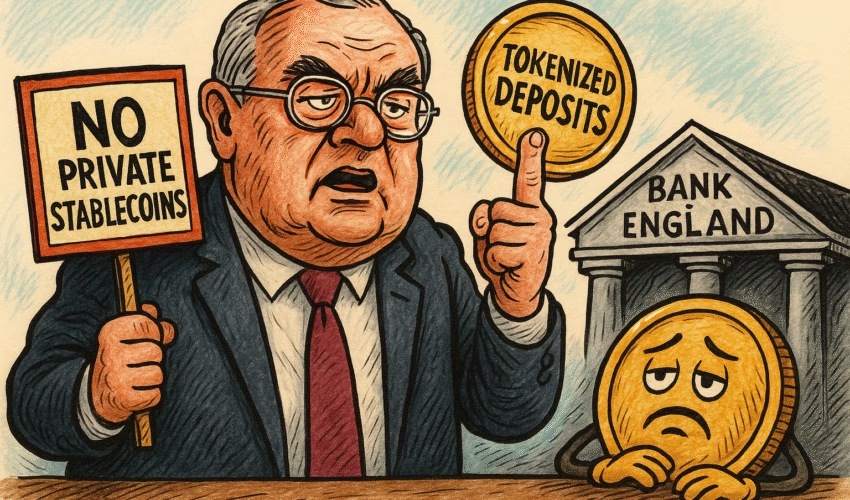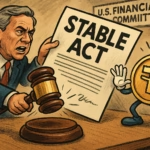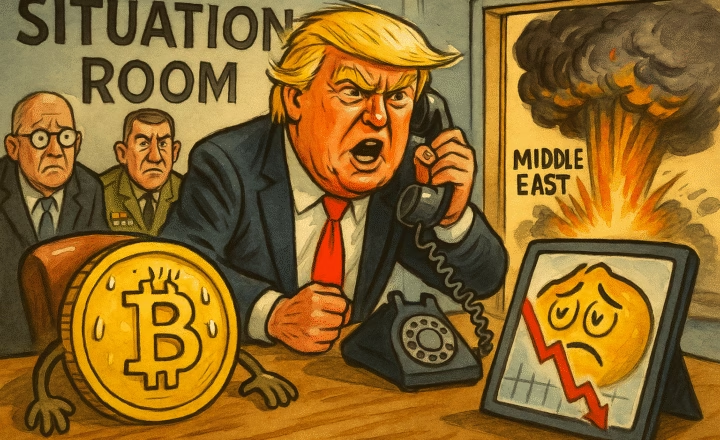Bank of England Governor Cautions Against Private Stablecoins, Urges Focus on Tokenized Deposits
Bank of England (BoE) Governor Andrew Bailey has issued a strong warning regarding the growing adoption of privately issued stablecoins, highlighting the systemic risks they could pose to global financial stability. In a recent interview with The Sunday Times, Bailey urged regulators and central banks to prioritize tokenizing bank deposits over embracing private digital fiat tokens.
Stablecoins a Threat to Monetary Sovereignty, Says Bailey
Bailey emphasized that stablecoins—crypto assets typically pegged to fiat currencies—could undermine sovereign control over national currencies and introduce instability into the banking system. His remarks add to a growing chorus of European officials expressing concerns about the rapid expansion of the stablecoin sector and its potential to disrupt traditional finance.
He also dismissed the idea of the UK launching a central bank digital currency (CBDC), stating that the BoE should instead focus on safer, regulated alternatives like tokenized deposits within the existing banking framework.
Bailey’s statements carry added weight given his new role as chairman of the Financial Stability Board (FSB), a global body tasked with monitoring and advising on the international financial system. His leadership at the FSB could signal tighter global scrutiny on stablecoins going forward.
Stablecoins Reshape Global Payment Infrastructure
Stablecoins are among the most widely used assets in the crypto sector, with a combined market capitalization exceeding $250 billion. These digital tokens are often used to facilitate borderless payments, provide dollar exposure in developing economies, and bypass traditional banking infrastructure.
Advocates argue that stablecoins increase the geographic reach of fiat currencies, allowing users to access US dollars, euros, and yen via blockchain networks. This removes the need for local banking rails and could help democratize access to financial tools, particularly in underbanked regions.
U.S. Embraces Stablecoins Under Trump Administration
While the UK and EU express caution, the United States has taken a much more favorable stance under the administration of President Donald Trump. Earlier this year, Treasury Secretary Scott Bessent announced at the White House Digital Asset Summit that developing a comprehensive stablecoin regulatory framework is a top policy priority.
Bessent emphasized that stablecoins are key to extending the dominance of the US dollar, particularly in a digital economy. He noted that stablecoins backed by cash reserves or short-term U.S. Treasury bills could help reduce inflationary pressures by broadening demand for U.S. debt instruments—even among users who only have access to a smartphone and a crypto wallet.
Federal Reserve Chairman Jerome Powell has echoed similar sentiments, calling for clear and unified regulations to govern the issuance and oversight of stablecoins in the U.S.
European Concerns Mount Over Dollar-Backed Stablecoins
Despite these developments in the U.S., European officials have continued to sound the alarm on the growing influence of dollar-pegged stablecoins within their jurisdictions. There is increasing concern that widespread adoption of these assets could threaten the euro’s role in the global economy and undermine regional financial stability.
Bailey’s warning aligns with broader European efforts to curtail the influence of foreign digital currencies and protect the eurozone’s monetary autonomy. As more governments grapple with the implications of stablecoin adoption, the debate is intensifying between the benefits of innovation and the need for centralized control and regulation.
As stablecoins continue to gain momentum worldwide, the divide between regulatory approaches in the U.S. and Europe is becoming increasingly stark—potentially shaping the future landscape of global finance.












